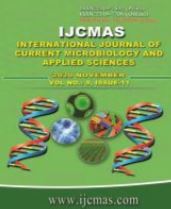


 National Academy of Agricultural Sciences (NAAS)
National Academy of Agricultural Sciences (NAAS)

|
PRINT ISSN : 2319-7692
Online ISSN : 2319-7706 Issues : 12 per year Publisher : Excellent Publishers Email : editorijcmas@gmail.com / submit@ijcmas.com Editor-in-chief: Dr.M.Prakash Index Copernicus ICV 2018: 95.39 NAAS RATING 2020: 5.38 |
The gene silencing in horticulture transgenic crops is too crucial to know about the internal mechanism of plant at genomic level. Horticulture involves a variety of plants and crops including fruit, vegetables, spices, and ornamental plants. Gene silencing refers to the ability of a cell to prevent the expression of a certain gene. With the cleavage or translational repression of the messenger RNA (mRNA) molecules, the genes that form them are essentially inactive. Horticultural plants have evolved a variety of gene silencing pathways in which small RNAs (20–30 nucleotides) repress the expression of genes at the transcriptional or post-transcriptional level. Gene silencing using RNA interference technology, transcriptional gene silencing, and virus-induced gene silencing has been used in horticultural crops. The presence of double-strand RNAs inside the cell lead to the production of small interfering RNAs, short hairpin RNAs, and micro-RNAs. The production of their RNAs leads to the silencing of mRNA (actual protein coating RNA). This technique is a very effective experimental tool to silence specific genes for better stress tolerance, enhance insect/pest/pathogen resistance, and improve nutritional status. This technique and mechanism can be controlled by artificial means and applied for the improvement of cultivars of a variety of horticultural crops.
 |
 |
 |
 |
 |